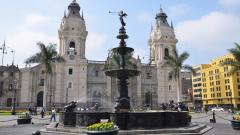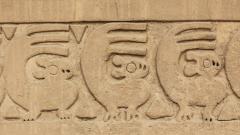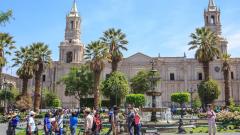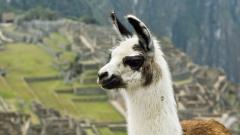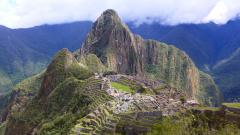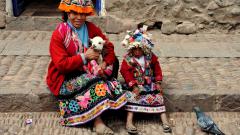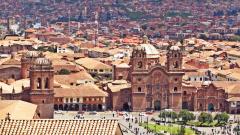 travel to Peru
travel to Peru
The Republic of Peru is located in the western part of South America, whose borders border Colombia, Ecuador, Bolivia, Brazil and Chile. Peru stands out for its great landscape richness and its natural resources, highlighting the following regions: the Jungle, located in the eastern part of the country and whose climate is characterized by being mainly humid and tropical; the Mountain range, where we find the Andes and its temperatures become extreme throughout the day; and the Coast with its mainly temperate and sunny climate throughout the year.
In terms of its historical heritage, Peru has a total of twelve tourism resources designated as World Heritage by UNESCO. The country has great relics of its indigenous past: the Machu Picchu Sanctuary, the famous and ancient Inca citadel located high in the mountains; the City of Chan Chan, a large archaeological complex composed of urban centres, walls, canals, etc .; the Nasca lines, figures drawn on the surface of the Nasca desert; the Sacred City of Caral, place of origin of one of the oldest civilizations on the planet; the Qhapaq Ñan, a system of routes that connected diverse indigenous towns and other archaeological complexes.
The massive arrival of Spanish settlers in Peru during the sixteenth century left behind great architectonic buildings worthy of visiting, such as the City of Cusco, the Historic Centre of Arequipa, and the Historic Centre of Lima, the current capital of Peru. All these cities are an almost obligatory visit to know the colonial history of Peru.
Peru also offers a variety of protected natural areas of great beauty: the Huascarán National Park, where we can see clear lakes and large glaciers that cover the Andean mountain range like a whitish mantle; the Manu National Park, whose exotic biodiversity is one of the most complete on the planet; and Titicaca Lake, the second largest lake in South America and where small local communities live today. These and many other places are highly recommended natural tourist resources to enjoy the varied natural wealth of the country.
The pre-Columbian indigenous culture is very present within the folklore of the country, which to this day are preserved in Peruvian dance, music and crafts. The Peruvian people proudly display their more traditional customs in ceremonies rooted in the cult of the Earth (Payment to the Earth). It is also characterized as a fairly Catholic town, and a small percentage of the population embraces evangelism.
The official language of the country is Spanish, in addition to other more minority indigenous languages such as Quechua and Aymara. The capital of Peru is Lima, founded in 1535 by Spanish settlers.
Without a doubt, Peru is a fascinating country full of culture and history: its varied landscape, its rich folklore and its hospitable people make this place attract tourists from all over the world, inviting them to discover the millenary wonders that houses what one day It was the oldest civilization in South America.
REQUIRED DOCUMENTS
To enter Peru it is necessary to present the passport with a minimum validity of 6 months, except for the following countries that only need to show their identity document: Ecuador, Colombia, Bolivia, Venezuela, Paraguay, Uruguay, Brazil, Argentina and Chile.
The maximum period of stay in the country is 183 days without the possibility of extension.
Depending on the visitor's country of origin, the visitor may need a visa or not. For more information about visas you can consult the following page: http://www.peru.travel/plan-your-trip/entering-peru.aspx
EMBASSIES AND CONSULATES: https://www.embassypages.com/peru
PRINCIPAL AIRPORTS OF PERU
- Jorge Chávez International Airport, Lima (Code LIM).
- Teniente Alejandro Velasco Astete International Airport, Cusco (Code CUZ).
- Capitán FAP Carlos Martínez de Pinillos International Airport, Trujillo (Code TRU).
- Capitán FAP Guillermo Concha Ibérico International Airport, Piura (Code PIU).
- Capitán FAP José Abelardo Quiñones Gonzáles International Airport, Chiclayo (Code CIX).
- Alfredo Rodríguez Ballón International Airport, Arequipa (Code AQP).
- Coronel FAP Francisco Secada Vignetta International Airport, Iquitos (Code IQT).
practical information
useful information before leaving
Language
Religion
Political regime
Currency
Warnings
Documentation
Vaccines
recommendations
Recommendations before traveling to Peru
SECURITY
You have to be very careful when exhibiting valuable possessions, such as money, jewellery, technological devices, etc.
Make a copy of the identification documents and keep the originals inside the hotel safe or elsewhere.
Avoid uncrowded areas, both at night and during the day.
Do not change money in the street or carry large amounts of money with you.
There are areas that should be avoided for the safety of the user, check with the authorities of the country about these areas.
When moving to the airport, it is recommended to store luggage in the trunk in order to avoid criminal assaults while the vehicle is stopped.
To get around, contact official taxi companies or other authorized means of transport.
Have medical insurance, and travel insurance in case of loss of passport or luggage.
If you wish to drive within the country, you must carry your driver's license, passport or copy of it, and the rental agreement in case you have rented the vehicle. When driving, you have to be cautious and check the state of the roads and weather.
Being an area with frequent seismic activity, the necessary precautions should be taken in case of an earthquake and follow the instructions of the authorities. In addition, extreme caution should be exercised if we are in coastal areas, since there may be a tsunami risk.
It is forbidden to take photographs of airports, military bases, police stations and areas near high voltage towers.
It is forbidden to subtract and commercialize with patrimonial elements of the country, in addition to the flora and fauna without prior notice to the corresponding authorities.
HEALTH
If you intend to visit jungle areas, it is recommended to get vaccinated against yellow fever at least ten days before the trip. It is also recommended, although it is not necessary to be vaccinated with diseases such as tetanus, polio, typhoid or hepatitis A and B.
It is also advisable to use mosquito repellents in jungle areas and to wear clothes that cover our arms and legs, in order to prevent dengue.
In high mountain areas, hydrate properly and get plenty of rest so you do not get tired.
Avoid consuming tap water, in addition to food without disinfecting.
In coastal areas or with high solar radiation use a sunscreen with high protection factor.
In the case of carrying out mountain activities, the user must be provided with medical assistance insurance, in addition to taking the necessary precautions regarding a qualified guide and safety material.
CLIMATE AND TEMPERATURES
It is important to know that Peru is located in the southern hemisphere, so the season of the year will be very different from the one in the countries of the northern hemisphere.
- Travel to Peru in winter:
Winter in Peru begins on June 21 and ends on September 21. Predominantly cold and humidity in the environment and whose temperatures can fall to almost 46°F, and hovering highs of 68°F.
- Travel to Peru in the spring:
Spring in Peru begins on September 21 and ends on December 21. Peruvian spring is characterized by being fresh and unstable during the first months, while in the middle it enjoys a more stable and sunny weather. As for temperatures, they do not usually vary much with respect to winter, although in mid-November the temperatures tend to be hotter.
- Travel to Peru in summer:
Summer begins on December 21 and ends on March 21. The intense heat and the sun are the protagonists during this period, although rainfall also predominates in mountain and jungle areas. The minimum temperatures can be around 68°F and the maximum temperatures above 86°F.
- Travel to Peru in the fall:
Autumn in Peru begins on March 21, and ends on June 21. During this time, the weather is usually warm and warm at the beginning of autumn. Between the months of May and June we highlight a cooler climate with occasional rainfall and strong winds. Temperatures hardly vary from 68°F.
BUSINESS HOURS
Shops usually open from Monday to Saturday from 9:00 a.m. to 8:00 p.m., and large stores from 10:00 a.m. to 8:00 p.m. On Sundays the stores are closed, except for some shopping centres. Office hours are from 09:00 to 13:00 and from 15:00 to 19:00.
TIPS
Tips are not mandatory, but in services such as restaurants and hotels it is preferable to give a tip of between 5 and 10% depending on the quality of it.
ELECTRICITY
The voltage is 220 volts and 60 Hz. The types of plug used are A, B and C.
TELEPHONES OF INTEREST
The telephone prefix of the country is +51.
Some phones of interest to tourists: national police (105); firefighters (116); ambulance (106), red cross (115); High mountain rescue (043 391163).
TIME ZONE
UTC-5.

